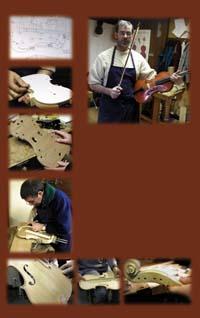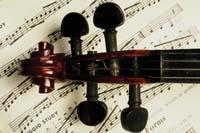The question of na de Luthier
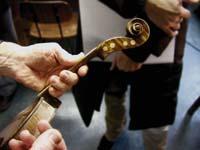
The cheapest violins on the market are made by the machines, but the player who wants to ensure the sound quality has to buy a handmade instrument. He needs the work of a luthier, an authentic craftsman. And this craftsman will spend months turning a lot of wood into a fascinating instrument inside a workshop. You will work the wood by hand, like a carpenter, making the pieces one by one, the best possible. And, throughout the process, looking for the answer to the luthier's eternal question.
What is the quality of a violin or viola? Surely in many factors. It is not the form, materials or design used, but the combination of it all. To make a good violin you have to take care of the smallest detail and, still, it is difficult to imagine.
Cremona School
It was undoubtedly invented by several luthier who lived three hundred years ago in the Italian city of Cremona. They didn't make the perfect instruments, but today they made example violins. The most famous luthier was Antonio Stradivari, but he was not the only one, since Stradivari followed the tradition guarded by the Amati family, which the master Nicola Amati taught him to make violins. At the same time, the luthier Guarneri del Gesù also made great violins. Stradivari violins have a good sound; Guarne violins have an intense sound. Today, in his works - and also in those of the rest of luthier of the school of Cremona - he seeks an answer to the eternal question of luthier.
At the school of luthiers of the Arriaga Conservatory in Bilbao, as in other workshops, these old violins take as a model for the manufacture of new violins. If it is not of the plans of the original instrument, part of the photographs.


Unfortunately, a plane or photo cannot explain how these teachers worked. Current technology can analyze materials, designs and the physical behavior of the instrument, but it does not fully unravel the secret of sound. However, it allows to analyze the parts individually.
Parts
The violin sound is produced by rubbing the strings. Therefore, it is worth thinking that the quality of the strings is the most important thing to make good sound. However, when we hear a violin we do not hear the vibration of the strings, those who make the sound more sonorous also have a very small sound when vibrating. Requires amplification.
The amplification is done by means of a soundboard, the body of the violin. For this it is necessary to transmit the vibration of the threads. The transmission path is short, but you have to take good care of it to get a good sound. The vibration of the threads is collected by the bridge, and that of the bridge, the lid on the violin, and the whole box and the interior air vibrates. Therefore, we hear the sound produced by the resonance of kutxa, although in that sound all the elements intervene.

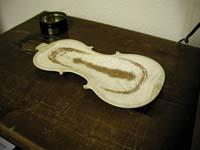
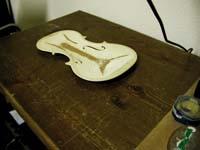
For the violin to have good sound, all components must vibrate properly. The problem is that each piece has its own ways of vibrating, and it is precisely the correct manipulation of them. It is not just about working wood, but the piece vibrates in certain shapes and frequencies.
The work of centuries has taught the Luthieres how to act. The bridge, for example, must be rigid, because if it were flexible it would “eat” force to vibration. Rigid yes, but not rigid, because it has to vibrate at a frequency of 3000 hertz.
Luthier knows that if the bridge transmits a frequency of 3000 hertz well, the violin box will receive the vibrations well; if it is good, it will amplify them well (because our ear is very sensitive to those frequencies). The luthier therefore works the wood to obtain the special shape of the bridge and measures the vibration frequencies of the piece. The results of these measurements allow you to know if the part has to be reworked and how to do it.
The same goes for the lid on the violin. The top lid is of great importance, hence the name of the harmonic top. Not only in violin, but in all string instruments. In guitars, for example, a myth has been opened on the harmonic top, some authors say that if the harmonic top is made with very good wood it does the same as all the other pieces of the guitar are cardboard, the sound will be perfect.
Unai Igartua, a physicist at the luthier school in Bilbao, questions the truth. "In any case, on the violin we know that is not true. On the guitar the distance between two caps is great, but on a violin they are very close to each other, the sound column or the soul plays both. It works the whole body of the instrument." Therefore, all body parts vibrate at the same time, which means that all parts act.
Working with dust
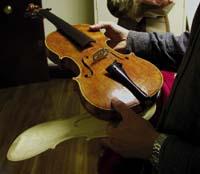
At the moment of vibrating, the maximum amplitude occurs at some points of the harmonic cap, with the maximum amplitude being the points that vibrate the most and the nodes, in some way, the ones that remain still. And you have to understand that the harmonic top and the bottom cap have several ways to vibrate. Finally, these modes of vibration will be combined with those of the side walls, thus creating the timbre of the instrument. They are own forms of vibration that are very useful for the luthier, since finally these forms of vibration indicate whether the wood is well worked or not.
Not all these modes of vibration are equal. Luthier knows which ones are the most important, that is, how the tapas will have the ease of vibrating. "The most important forms of vibration in violins can be the first, the second and the fifth," explains Igartua. And there are techniques to analyze it. The old and current luthier analyze with their hands the hardness of the lid, but there is another method to check it: make the lid vibrate with dust on top.
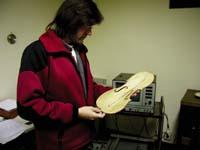
It can be a crushed cork or sawdust, although with this powder dispersed on the lid, when the frequency sent to it coincides with a resonance, the powder begins to jump and goes where the lid does not vibrate.
The result of this experiment is a drawing that composes the dust on the lid, a drawing for each way of vibrating. Analyzing this drawing, the luthier knows if the lid is vibrating in the necessary places and, therefore, where should continue to remove the wood to give the perfect shape to the lid.
Screenplay
This study can be carried out in two covers, harmonic and rear, which with the side walls form a soundboard together with threads and bridges. But the instrument has more pieces and being such a small instrument everyone can influence the sound.
The script is the largest piece we have not mentioned so far, and is considered to have more influence. Like any other piece, it has its own ways of vibrating, but for the luthier that is no problem. This is because the main vibrations of the driver occur at very low frequencies and does not have a large capacity of sound irradiation.

Physicists are not completely convinced of it. "I don't know if it has no influence. It is believed to be so, but even a little, it will always influence. However, it is usually not necessary to worry about it. This is also studied and there is luthier that the resonance frequency of the conductor and the whisk must be equivalent to the aerial resonance of the box," explains Igartua.
There is no need to worry about violins, but what about the larger instruments in the same family? In violas and especially in chelo and double bass? Since the notes are lower, the script may influence the sounds of these instruments. Unai Igartua says no. "By increasing the size of the instrument, the script also increases proportionally, and the main forms of vibration are even lower, such as cello and double bass. They never enter the instrument's note range, so they don't generate problems."
Retrospective
It is clear that the violin is very well designed. Of course, today all traditional instruments are well designed, but the violin is special. Luthier defends that it is the most worked instrument, the most studied. More than guitar, piano or flute. For example, the standard flute currently used was designed by the Bavarian Theobald Boehm in the 19th century. In the 20th century, about two hundred years after the standard violin.
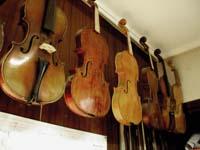
In the Baroque era, the violin design underwent some changes. In order to achieve a more sound sound, the strings began to be made with more tension, which required a more suitable design of the script and the harmonic cover.
The experts at the Cremona school had a formula for making good violins. But what is it? To make the harmonic lid, for example, Stradivari and his master Nicola Amatioso were skilled in the wood carving, but how did they know where to remove the wood and where to leave it? The experience would give them an approximate idea, but to refine the work they would need a method to find and correct the weaknesses of each instrument.
At that time, to study the forms of vibration, they touched the lid with a finger and could continue working the wood to polish; or they could feel the hardness by moving the lid with their hands. These craftsmen used what they had at their disposal. Today, however, we use acoustic laboratories that, however, obtained a better result than most current luthier.
Was it the sense of the craftsman? The materials they used? It may be one thing or another. Technological studies have not provided reliable answers. Surely the question of luthier will remain unanswered forever.
